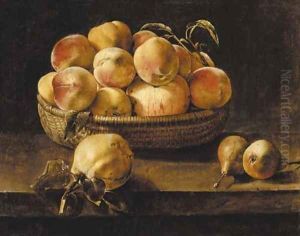Rene Nourrisson Paintings
René Nourrisson was a French painter whose works are less known in the mainstream art world yet hold a significant place in the annals of French art history. Born in 1865, Nourrisson's artistic journey began in the late 19th century, a period rife with artistic experimentation and evolution. He was a contemporary of the Impressionists, though his style did not strictly adhere to the principals of Impressionism. Instead, Nourrisson carved out a unique niche for himself by blending traditional techniques with emerging styles of his time, creating works that were both familiar and innovative.
Throughout his career, Nourrisson was deeply influenced by the scenic beauty of the French countryside and the urban vibrancy of Paris. These influences are evident in his landscapes and cityscapes, which are imbued with a sense of tranquility and a keen eye for the interplay of light and shadow. His technique varied from precise and detailed to more loose and impressionistic, allowing him to capture the essence of his subjects in a variety of ways. Despite the quality and depth of his work, Nourrisson did not achieve the same level of fame as some of his contemporaries, such as Claude Monet or Auguste Renoir.
Nourrisson's contributions to art were not limited to his paintings. He was also a respected teacher, imparting his knowledge and skills to a younger generation of artists. His teachings emphasized the importance of both tradition and innovation in art, a reflection of his own approach to painting. Nourrisson exhibited his work at several important venues, including the Salon de Paris, which was a pivotal platform for artists of his time. His works were well-received, earning him accolades and recognition among his peers.
René Nourrisson passed away in 1936, leaving behind a legacy that, while not as widely recognized as that of some of his contemporaries, is cherished among art historians and collectors who appreciate the subtlety and depth of his art. Today, Nourrisson's paintings are held in several private collections and museums, where they continue to be studied and admired for their unique blend of traditional and innovative elements. His life and work offer a fascinating glimpse into a transitional period in French art, marked by the tension between the old and the new, the familiar and the revolutionary.
